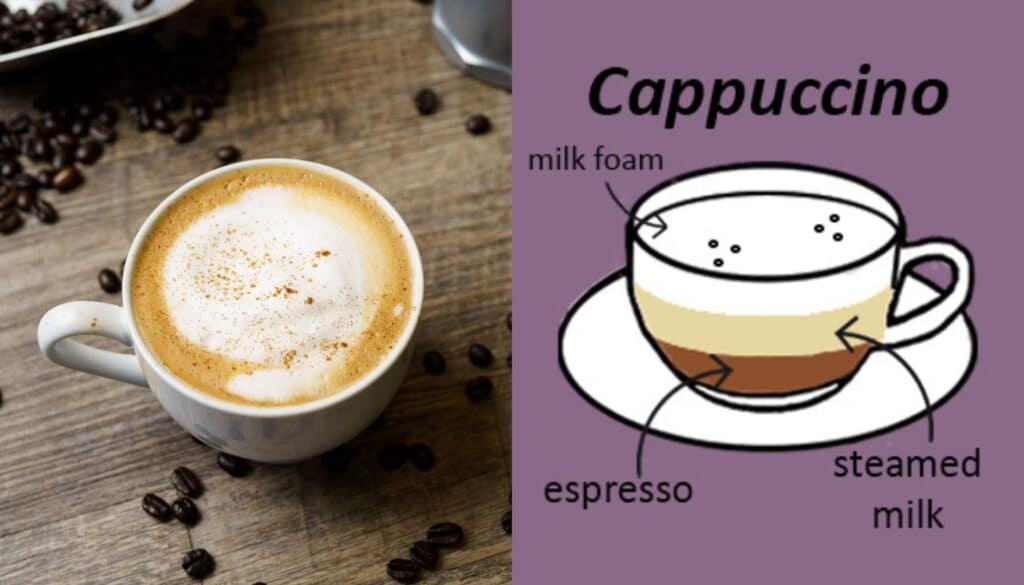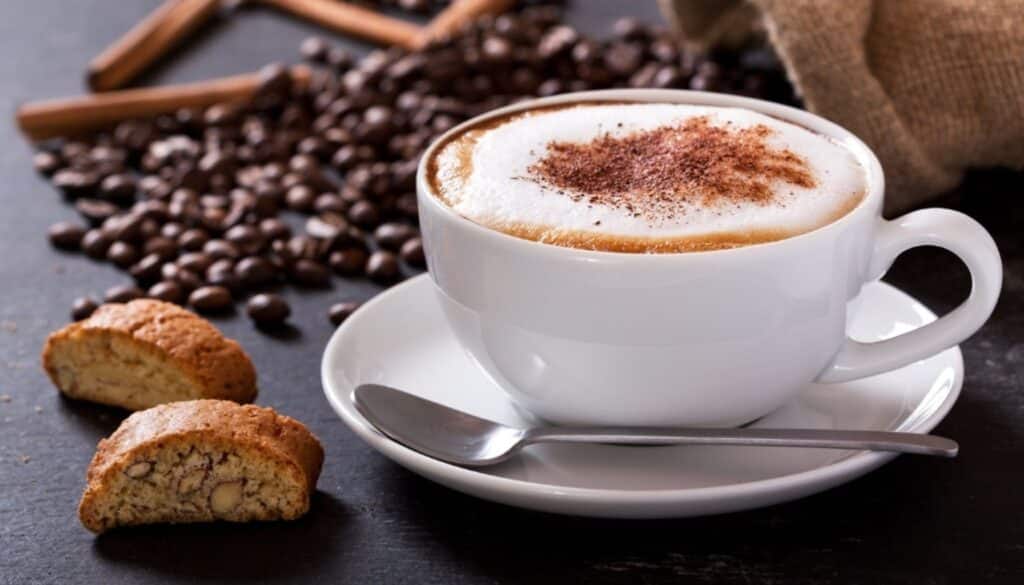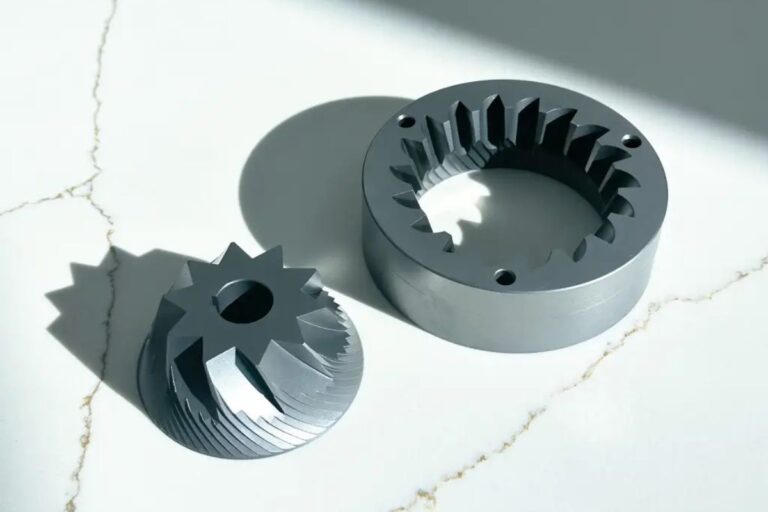The cappuccino’s story mixes centuries of tradition, culinary art, and global influence into a creamy and inviting cup, just as rich and frothy as the drink itself. This favorite coffee drink roots deeply in Italian culture but reaches out across continents, capturing the spirit of coffee culture worldwide.
Brief History of Cappuccino
People trace the cappuccino’s unique mix of espresso, steamed milk, and frothed milk back to 17th-century Europe. Its name comes from the Capuchin friars, a Franciscan monk group famous for their missionary work and distinctive brown robes. The drink’s rich brown color reminded people of the monks’ habits, which is how the cappuccino got its name. However, the drink as we know it today, with equal parts espresso, steamed milk, and milk foam, didn’t appear until the 20th century. This change came with the invention of espresso machines and the evolution of Italy’s coffee culture. By the mid-20th century, Italians had made cappuccino a morning ritual in their cafés. From there, it began winning over coffee lovers around the world.
What is a Cappuccino?
A cappuccino is an Italian coffee drink made with equal parts espresso, steamed milk, and milk foam, traditionally served in a 6 to 8-ounce cup. It features a rich espresso flavor balanced by the creaminess of milk and the airy texture of foam. Cappuccinos can be customized with flavors like vanilla or cinnamon and are often garnished with cocoa powder or cinnamon.
General Overview of What Cappuccino Is
To make a cappuccino, you blend equal parts espresso, steamed milk, and milk foam. The espresso lays a strong foundation, the steamed milk brings in body and sweetness, and the foam cap adds a luxurious texture while keeping the drink warm. Served in a 6 to 8-ounce cup, the cappuccino stands out for its perfect balance and complexity. It’s more than just a coffee drink; it’s famous for its beautiful presentation, especially with the creative latte art made by skillfully pouring steamed milk over the espresso. This mix of beauty and rich, balanced taste turns the cappuccino into a cherished ritual for coffee enthusiasts everywhere.
The Basics of Cappuccino

Getting to know the basics of a cappuccino can deepen your love for this popular coffee drink and show off the art and precision it takes to make one. At its heart, a cappuccino mixes espresso, steamed milk, and milk foam in harmony, making each part crucial to the drink’s character and overall experience.
Definition of Cappuccino
Originating from Italy, a cappuccino perfectly combines equal parts espresso, steamed milk, and milk foam. This specific mix sets it apart from other coffee drinks, offering a special blend of richness, creaminess, and fluffiness. Served in a smaller cup, usually 6 to 8 ounces, the cappuccino packs a strong espresso punch, enhanced by the gentle sweetness and smooth texture of milk.
Key Ingredients
- Espresso: The foundation of a cappuccino, providing the deep, rich coffee flavor that characterizes the drink.
- Steamed Milk: Adds smoothness and body, softening the intensity of the espresso.
- Milk Foam: A layer of airy foam that tops the drink, adding a light texture and insulating the drink to keep it hot.
The quality of the ingredients and the skill in combining them are crucial for creating the perfect cappuccino. The espresso must be well-brewed, and the milk steamed to a creamy consistency, with the foam being fine and velvety, not bubbly or stiff.
How It Differs from Other Coffee Drinks
- Latte: While a latte also consists of espresso and milk, it has a higher ratio of steamed milk to espresso, typically 3:1, making it creamier and less intense than a cappuccino.
- Macchiato: A macchiato is essentially an espresso “stained” or “marked” with a small amount of milk, usually foam, making it much stronger in coffee flavor compared to a cappuccino.
- Flat White: Similar to a cappuccino but with a higher ratio of coffee to milk and a focus on a thin layer of microfoam, resulting in a stronger espresso flavor and a velvety texture without the foam cap.
- Americano: Made by diluting espresso with hot water, an Americano lacks the milk components of a cappuccino, offering a different taste and texture experience.
The distinction between a cappuccino and other coffee drinks lies not just in the ingredients but in their proportions and the method of preparation. A cappuccino’s balanced composition and layered presentation make it a unique and cherished part of the coffee experience.
The History of Cappuccino

The cappuccino, with its velvety foam and rich espresso base, is more than just a coffee drink; it’s a historical journey that reflects centuries of culinary evolution and cultural exchange. From its humble beginnings to becoming a staple in coffee cultures around the globe, the cappuccino tells a story of innovation, tradition, and global connection.
Origins and Etymology
The roots of the cappuccino date back to the coffee houses of 17th-century Europe, but the drink as we know it today began to take shape in Italy in the early 20th century with the advent of espresso machines. The name “cappuccino” comes from the Capuchin friars, a Franciscan order of monks known for their missionary work and their characteristic brown robes. The color of their habits was reminiscent of the rich brown hue of the coffee mixed with milk, leading to the term “cappuccino.”
Evolution of the Drink Over Time
The modern cappuccino, with its equal parts of espresso, steamed milk, and frothed milk, emerged with technological advancements in espresso machine design. The introduction of the steam wand in the 20th century allowed baristas to steam and froth milk to a creamy consistency, a key development in the evolution of the cappuccino. Initially, cappuccinos were larger and milkier, more similar to what we consider a latte today. Over time, the drink evolved into the more balanced and artfully prepared beverage enjoyed worldwide, with a focus on the quality of the espresso and the texture of the milk.
Cappuccino’s Spread Around the World
The spread of the cappuccino outside Italy began in earnest after World War II, as Italian immigrants introduced their coffee culture to new lands. In the latter half of the 20th century, the popularity of espresso drinks, including the cappuccino, exploded globally, thanks in part to the rise of coffeehouse chains and the growing appreciation for specialty coffee. The cappuccino has been embraced and adapted by different cultures, each adding its twist to the classic formula. In some places, variations in milk type, flavor additions, and serving size reflect local tastes and culinary traditions.
Today, the cappuccino is a symbol of global coffee culture, cherished for its balance of flavors, its comforting warmth, and its ability to bring people together. From its monastic associations to its status as a staple of coffee enthusiasts everywhere, the cappuccino continues to evolve while remaining true to its roots.
How to Make a Cappuccino

Creating a cappuccino at home can be a rewarding experience, allowing you to tailor the drink to your personal taste while enjoying the process of crafting a coffeehouse-quality beverage. With the right equipment and technique, you can make a perfect cappuccino that rivals those of the best baristas.
Equipment Needed
- Espresso Machine: A good quality espresso machine with a steam wand is essential for brewing strong espresso and frothing milk.
- Coffee Grinder: Freshly ground coffee beans make a significant difference in flavor. A burr grinder is preferred for its consistency.
- Tamper: Used to evenly press the coffee grounds into the portafilter, ensuring an even extraction.
- Milk Frothing Pitcher: A stainless steel pitcher is ideal for frothing and steaming milk.
- Thermometer (optional): Helps in monitoring the milk’s temperature for optimal frothing.
- Cappuccino Cup: A 6 to 8-ounce cup is traditional and ideal for maintaining the correct proportions of espresso, milk, and foam.
Step-by-Step Brewing Process
- Grind the Coffee: Grind enough coffee beans to make a strong espresso shot (about 18-20 grams for a double shot). The grind should be fine, similar to table salt.
- Tamp the Coffee: Place the ground coffee in the portafilter and tamp it down firmly and evenly.
- Brew the Espresso: Lock the portafilter into the espresso machine and start the brew. A good shot of espresso should take about 25-30 seconds to pull.
- Steam the Milk: While the espresso is brewing, pour cold milk into the frothing pitcher, no more than halfway full. Place the steam wand just below the surface of the milk and turn on the steam. Keep the tip near the surface to incorporate air until the milk reaches about 100°F (38°C), then submerge the wand deeper to heat the milk to around 150°F (65°C) to 160°F (70°C).
- Combine and Serve: Pour the brewed espresso into your cappuccino cup. Then, holding back the foam with a spoon, pour the steamed milk over the espresso. Finally, spoon the frothed milk on top to create a thick layer of foam.
Tips for Frothing Milk to Perfection
- Use Cold Milk: Start with cold milk and a cold pitcher for the best foam.
- Incorporate Air Early: Add air (texture the milk) at the beginning of the steaming process when the milk is cold. This creates finer, more integrated bubbles.
- Position the Steam Wand: Keep the tip of the wand just below the surface of the milk to create a vortex, helping to incorporate air evenly and heat the milk simultaneously.
- Avoid Overheating: Overheated milk loses its sweetness and optimal texture. Use a thermometer to ensure the milk doesn’t go over 160°F (70°C).
- Practice: Frothing milk takes practice to perfect. The consistency you’re aiming for is wet paint-like, with small, uniform bubbles.
Mastering the art of making a cappuccino at home requires patience and practice, but the reward is a beautifully crafted, delicious coffee drink to start your day or enjoy as a special treat.
Variations of Cappuccino

The classic cappuccino, with its perfect balance of espresso, steamed milk, and froth, has inspired a range of variations that cater to contemporary tastes and dietary needs. From traditional interpretations to modern twists and inclusive adaptations, the cappuccino’s versatility has ensured its continued popularity worldwide.
Traditional vs. Modern Interpretations
- Traditional Cappuccino: In its most classic form, a traditional cappuccino consists of equal parts espresso, steamed milk, and milk foam, usually served in a 6 to 8-ounce cup. This formula emphasizes the harmony between the rich espresso and the creamy milk.
- Modern Interpretations: Today’s cappuccinos often embrace creativity and personalization, leading to variations in size, flavor additions, and presentation. Modern versions might include flavored syrups (like vanilla, caramel, or hazelnut), alternative brewing methods for the espresso, or even artistic latte art on the foam’s surface.
Popular Cappuccino Variations Around the World
- Iced Cappuccino: Especially popular in warmer climates, this version is served cold, often with cold frothed milk or even ice cream.
- Dry Cappuccino: Features a smaller amount of steamed milk and a larger portion of milk foam, making it “drier” than the standard cappuccino.
- Wet Cappuccino: Contains more steamed milk and less foam, making it “wetter” and creamier than the traditional version.
- Flavored Cappuccino: Incorporates syrups or spices like cinnamon or cocoa powder, adding a unique twist to the classic taste.
Dietary Adaptations (Lactose-Free, Non-Dairy Milks)
As dietary preferences and requirements evolve, so too have the options for making cappuccinos more accessible:
- Lactose-Free Milk: For those who are lactose intolerant, lactose-free cow’s milk offers a way to enjoy a traditional cappuccino without digestive discomfort.
- Non-Dairy Milks: Plant-based milks like almond, soy, oat, and coconut milk have become popular alternatives for vegans and those with dairy allergies. Each non-dairy milk brings a unique flavor and texture to the cappuccino, though some froth better than others. Oat milk, in particular, is prized for its creamy texture and ability to froth similarly to cow’s milk.
These variations and adaptations not only reflect the cappuccino’s enduring appeal but also its ability to evolve with changing culinary landscapes and personal tastes. Whether sticking to the traditional recipe or exploring modern interpretations and dietary adaptations, the cappuccino remains a beloved part of global coffee culture.
The Cultural Significance of Cappuccino

The cappuccino, beyond being a staple of coffee menus worldwide, carries a rich cultural significance that spans from its Italian roots to its global adoption and representation in popular culture and media. Its journey from a simple coffee drink to an emblem of coffee culture reflects its impact on social practices, culinary traditions, and even art.
Cappuccino in Italian Culture
In Italy, the cappuccino holds a special place in daily life and is deeply ingrained in the social fabric. Traditionally consumed in the morning, often as part of breakfast at a café or bar alongside a pastry, the cappuccino is more than just a beverage—it’s a ritual that starts the day. Italians typically enjoy their cappuccino standing at the bar, engaging in brief but meaningful social interactions. This practice highlights the Italian emphasis on quality of life, where even the simplest daily routines are savored and imbued with significance. The traditional Italian cappuccino, with its strict proportions and emphasis on quality, reflects the Italian culinary ethos of simplicity, balance, and excellence.
Cappuccino as a Global Phenomenon
The globalization of the cappuccino can be attributed to the rise of coffee culture and the proliferation of coffee shops around the world. As specialty coffee has grown in popularity, so too has the appreciation for authentic espresso-based drinks like the cappuccino. This global embrace has led to a variety of interpretations and innovations, making the cappuccino a versatile beverage that resonates with diverse audiences. Its spread worldwide has also been facilitated by the cultural phenomenon of “Italian chic,” where Italian food and beverages are celebrated for their quality and tradition, making the cappuccino a symbol of sophistication and culinary artistry.
Cappuccino in Popular Culture and Media
The cappuccino’s influence extends into popular culture and media, where it often signifies style, leisure, and modernity. Films, television shows, and books frequently feature characters enjoying a cappuccino, sometimes using the setting of a coffee shop as a backdrop for key scenes or character interactions. This portrayal reflects the role of coffee shops as contemporary social hubs, where people meet, work, and relax. Moreover, the art of cappuccino preparation, especially latte art, has gained visibility on social media platforms, further cementing its status as both an art form and a marker of lifestyle aspiration.
The cultural significance of the cappuccino is multifaceted, embodying traditions and trends, local practices and global exchanges. It serves as a reminder of the power of culinary traditions to bring people together, fostering connections and enriching daily life across cultures.
How to Enjoy a Cappuccino

A cappuccino is more than just a coffee drink; it’s an experience that can be savored and enjoyed in many ways. Whether it’s appreciating the perfect balance of its ingredients, understanding the best times to indulge, or knowing what foods to pair it with, enjoying a cappuccino is an art in itself.
Best Times of Day to Drink Cappuccino
- Morning Ritual: In Italy, cappuccino is traditionally a morning beverage, enjoyed for breakfast with a sweet pastry or biscotti. Its rich flavor and caffeine kick make it an ideal start to the day.
- Afternoon Delight: For those outside Italy, a cappuccino can also be a luxurious afternoon pick-me-up. It’s a perfect way to break up the day, providing a moment of relaxation and rejuvenation.
- After Meal: While less common in Italy to drink milk-based coffees after 11 AM, in other cultures, enjoying a cappuccino after a meal can be a delightful way to conclude dining, offering a balance of sweetness and bitterness.
Food Pairings with Cappuccino
- Sweet Pastries: Croissants, Danish pastries, or scones complement the creamy and bold flavors of a cappuccino, making for a delightful breakfast or snack.
- Chocolate Desserts: The bitterness of chocolate, especially dark chocolate, pairs wonderfully with the rich, smooth taste of a cappuccino.
- Savory Breakfast Items: Quiches, breakfast sandwiches, and even omelets can balance the sweetness and creaminess of a cappuccino, especially if you prefer less sugar in your coffee.
Tasting Notes and How to Savor a Cappuccino
- Observe: Before sipping, take a moment to appreciate the appearance of the cappuccino—the contrast between the dark coffee and the white foam, possibly adorned with latte art.
- Smell: Inhale the aroma, noting the richness of the espresso combined with the sweetness of the steamed milk.
- Taste: Sip slowly, allowing the flavors to settle on your palate. A well-made cappuccino should have a balance of the slightly bitter espresso, the sweetness and creaminess of the milk, and the lightness of the foam.
- Texture: Pay attention to the mouthfeel. The silky foam should be the first thing you taste, followed by the warm liquid underneath. The experience is a combination of airy foam and creamy milk mixed with robust espresso.
To truly enjoy a cappuccino, take your time and engage all your senses. It’s not just a drink; it’s a moment to pause, reflect, and indulge in the simple pleasures of life. Whether you’re starting your day, needing a mid-day break, or rounding off a meal, a cappuccino offers a perfect blend of comfort and rejuvenation.
Conclusion
The cappuccino, with its deep history, perfect blend of flavors, and worldwide love, acts as a mainstay of coffee culture. Its trip from Italian cafés to global coffee shops doesn’t just spread a drink; it shares a cultural treasure. This frothy, espresso-based delight shows off the craft of making coffee, the happiness of morning routines, and the joy of moments spent together.
Why Cappuccinos Matter in Coffee Culture
The cappuccino brings to life the spirit of coffee culture by blending the strong taste of espresso with the smoothness of milk and the lightness of foam in perfect harmony. It stands as a tribute to the tradition of brewing and enjoying coffee, highlighting the barista’s skill and the drinker’s taste. Cappuccinos have played a big role in making espresso popular beyond Italy, introducing the world to the rich variety of coffee flavors.
More than its ingredients, the cappuccino symbolizes a time to pause, whether for self-reflection or conversation. In Italy, it’s a morning staple; elsewhere, it’s a luxurious treat anytime. Its role in popular culture and media marks it as a sign of elegance, warmth, and community.
How to Fully Enjoy and Value Cappuccino
Enjoying a cappuccino means as much about valuing the moment as it does about loving the drink. Whether you’re a purist who treasures the traditional way or someone who likes new twists, the important thing is to recognize the balance and skill involved in creating the perfect cappuccino. Discover the various ways to enjoy it, from the best time of day to the ideal snacks to go with it, and think about what makes it special for you.
As coffee’s world keeps changing, the cappuccino stays a beloved classic, symbolizing the rich past and exciting future of coffee culture. Its appeal comes from both its simplicity and complexity, offering something for everyone to cherish and appreciate. So, the next time you enjoy a cappuccino, take a moment to think about its journey from an Italian café to your cup and the collective experience of coffee lovers everywhere.







1 thought on “What is a Cappuccino?”
Pingback: What is a Galão? - Alpine Mountain Coffee